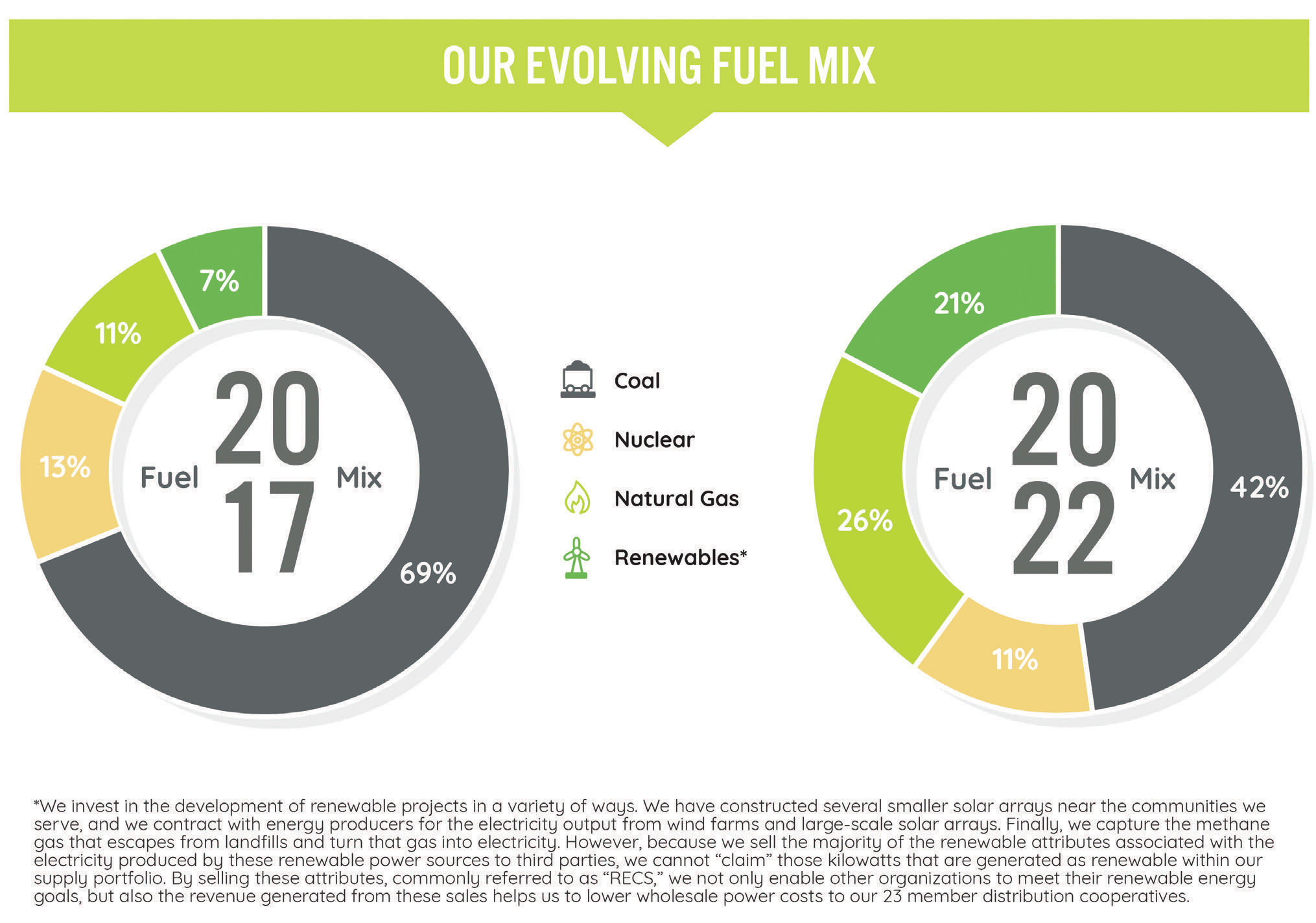
We see time evolving all around us: the leaves on the trees in our yard display the season, children get bigger — or new ones arrive! For some, graduations mean moving on to high school, leaving for college or moving into a first apartment. And some of us notice a bit more gray in the mirror.
The world is evolving just as quickly. We live in an era of unprecedented technological evolution that has transformed every aspect of our lives. This includes the utility industry. Electricity is the lifeline of our homes and communities. The ability to provide power is a balancing act — one that is getting more difficult to maintain for many reasons. It is certainly top of mind for me and, as I am learning, for you.
In the last decade, we have seen a significant increase in the amount of electricity generated by renewables as more windfarms and solar arrays are added to the grid. There is no doubt these benefit the environment by reducing carbon emissions, and they have become good long-term options to maintain a diverse power supply. Yet the evolution to renewables must happen with reliability and affordability at the forefront. Unfortunately, I do not feel that is always the case.
In particular, proposed federal government rules call into question the future of coal and gas power plants without appropriate replacements.
For background, coal and natural gas plants provide baseload power that reliably generate electricity needed to satisfy demand — including and especially during extreme weather. Renewables are intermittent resources which means, while effective much of the time, they do not work all the time. When the sun doesn’t shine and the wind doesn’t blow, solar arrays and windmills are not effective sources of generation.
That is why we need baseload resources to “keep the lights on.” While renewables benefit our environment by reducing our dependence on carbon-emitting resources, we need to leverage a variety of resources to ensure reliable energy.
The chart on page 6 highlights our reality. We have seen an appreciable increase in renewables powering the homes and businesses in our community.
Wabash Valley Power Alliance (WVPA), our wholesale power provider, reports a 27% decrease in generation coming from coal between 2017 to 2022. At the same time, renewables increased by 14% accounting for more than one-fifth of all the electricity we use. This works for now, and our green energy portfolio changes were completed intentionally and with stable baseload generation to back them up. Power supply is not an all or nothing situation. We need a range of resources to energize our community.
However, I want to be open with you; my concern is the future as we balance mandated federal regulations with the need for more electricity and the reality of renewables. Across the country, co-ops are at the front of this conversation and warning about the effects of an energy transition that moves too quickly.
Fortunately, at Jay County REMC, as an electric cooperative, we are part of a team dedicated to powering communities across rural America. I talk and strategize frequently with WVPA and its 22 other electric distribution cooperatives in Indiana, Illinois and Missouri. We are not sitting back and waiting to see what happens. We are planning and innovating on how to ensure we all can “keep the lights on.”
The thing I want to stress is that the solution is not one or the other. Our future, like the graphic illustrates, is a mix. Technology will undoubtedly provide part of the solution: battery storage is encouraging, nuclear could become more prominent and transmission improvements will ensure the reliable delivery of affordable electricity. As the electric evolution progresses, there is an undeniable constant: our commitment to you.




